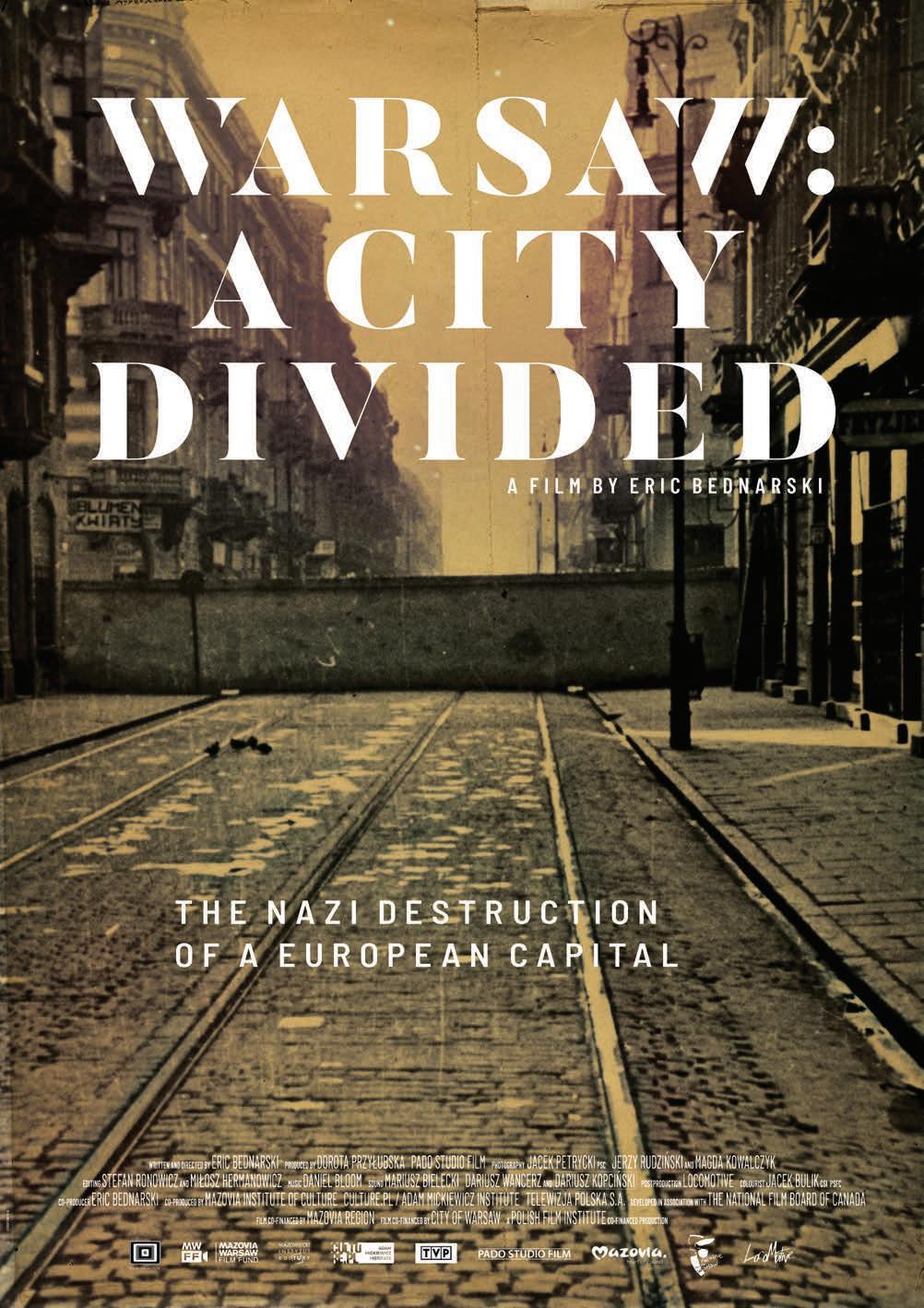
4 minute read
Warsaw: A City Divided
BY ERIC BEDNARSKI
This year, my documentary film “Warsaw: A City Divided” will make its Atlantic Canadian premiere as a part of the AJC’s April 2021 Yom HaShoah Holocaust Memorial observance. It is an honour for me, as a native Haligonian, to be contributing to this important occasion. Although I was born and educated in Nova Scotia, my strong family connections to Warsaw mean that I have always felt close to this city. I am half-Polish, and although I am not aware of any Jewish roots, I am deeply interested in Polish-Jewish history and culture. As a filmmaker, I have frequently been inspired to explore topics and issues relating to the history of Warsaw.
Advertisement
I learned at an early age how over the course of the Second World War, and in the years that followed, the city was divided and destroyed by one totalitarian force (that of the Nazis), then nationalized, redesigned and re-built by another (that of the Soviets). I have long been keenly aware of the tragedy of the Warsaw Ghetto. My father is 92 years old, so he remembers pre-War Poland. He survived the Nazi occupation and destruction of Warsaw and has many vivid memories. As I was growing up, his stories about the War and the Holocaust had a profound effect on me.
About fifteen years ago, I unearthed ten minutes of remarkable 8mm Polish amateur footage shot in the Ghetto in 1941, soon after its creation by the Nazis. This footage was completely unknown at that point. When I took it to Yad Vashem, the World Holocaust Remembrance Center and Memorial in Jerusalem, scholars there described it as the missing link in the visual history of the Warsaw Ghetto.
The material shot by the Polish amateur photographer differs in significant ways from the well-known footage later produced by Nazi German propaganda film crews in 1942, footage on which we have depended until now for visual documentation on the Ghetto. We are shown quite different locations. We discover the Ghetto in a much earlier phase of its existence. Above all, we are not seeing it through the eyes of occupiers and perpetrators.
With my discovery of the footage came a strong sense of responsibility. I knew I had to study it and properly identify its contents, and I knew I had to show it to the world. My goal was to incorporate the 8mm footage into a documentary that would provide a context for it and help the viewer to appreciate the significance of what it contains. The story of the Ghetto is already widely known, but I hoped to explore that story from new angles.
The initial development of the film was carried out in collaboration with the Atlantic Centre of the National Film Board of Canada, beginning in 2010. During this phase, I read widely on the subject, met and talked with survivors and witnesses in Warsaw, and consulted with institutions and historians in the U.K., Israel, Poland, and Canada. Work on the film continued over the next few years in Poland, where it was eventually shot and produced, and where it premiered in Warsaw in 2019. Since then, the film has been screened widely at international events and festivals. It will be broadcast on television in Germany, the Czech Republic and Poland later this year.
“Warsaw: A City Divided” is a film about the division of Warsaw and its horrific consequences. The main focus is on the creation and ultimate liquidation of the artificially established Ghetto, and the murder of its inhabitants. But the Ghetto is not treated in isolation. It is seen in relation to the city of which it had once been a living part and from which it was brutally severed.
The film foregrounds the stories of the protagonists—survivors and witnesses, Jews and non-Jews—who still call Warsaw their home, and interspersed throughout it are scenes of the anonymous people in the historic 8mm footage itself, almost all of whom would undoubtedly have perished before many months had passed. This is the film’s human face.
But my goal was also to shed new light on the actual process of division and destruction set in motion by the Nazis. The film stresses architectural and urban aspects of Nazi actions, exposing what amounted to a brutal and premeditated assault on the city as a functioning physical and social entity. By drawing attention to little-known German documents, my intention was to illustrate the insidious connections between Nazi ideology and bureaucracy, between seemingly banal urban and spatial restructuring decisions and genocide.
Throughout the film, scenes excerpted from the 8mm footage are juxtaposed with shots of corresponding present-day sites. The main intention here was to identify and pinpoint those locations for the contemporary viewer. But by interweaving past and present I also wanted to explore the idea of memory. The film shows just some of the ways in which the Ghetto is being remembered in Warsaw today, both at a personal and a collective level, and it stresses the particular difficulties associated with remembering a world which has almost completely vanished, through wartime destruction and post-war redevelopment.
After viewing my fi lm in April and seeing the remarkable and moving 8mm found footage, I hope Atlantic Canadians will have a better understanding of the tragedy that befell Warsaw and its Jewish community. I worked on this fi lm on and off for more than a decade, and by the time it was in its fi nal stages, xenophobia, racism and antiSemitism were once again on the rise all over the world. In such a world, the task of sustaining the memory of tragedies such as that of the Warsaw Ghetto is more urgent than ever. I see “Warsaw: A City Divided” as one small contribution to the process of keeping that memory alive.









